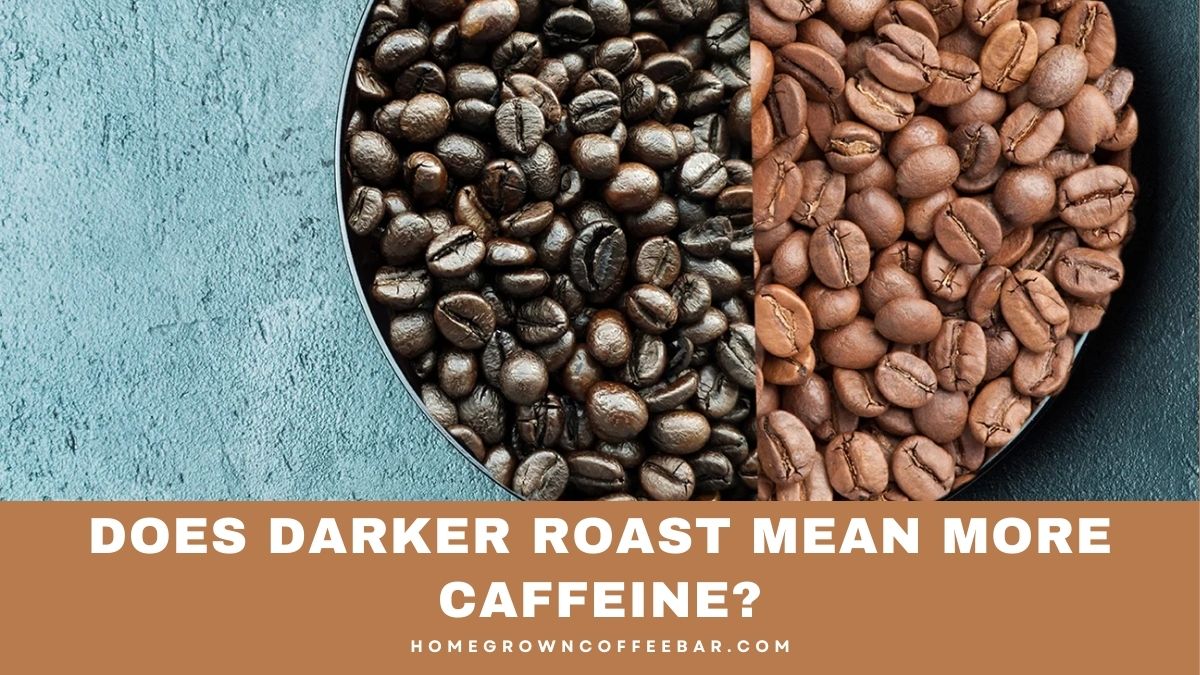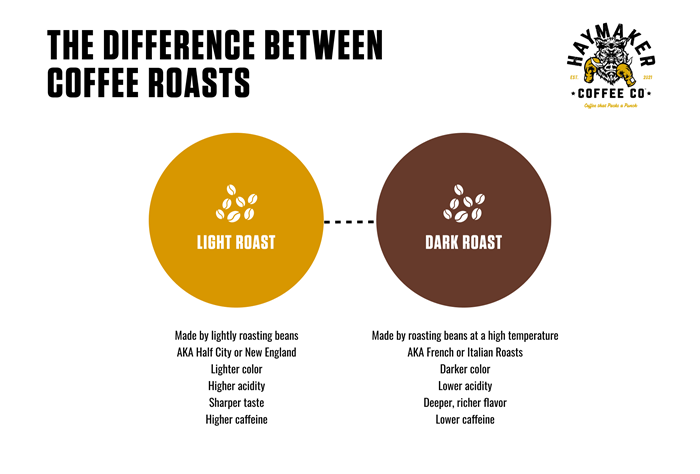Many coffee drinkers have long held the belief that the darker the roast, the higher the caffeine content. This common assumption has influenced choices for those seeking a more substantial energy boost from their cups of coffee. However, the relationship between roast levels and caffeine content is more complex than a simple dark-light dichotomy.
Let’s explore the factors that influence coffee’s caffeine content and debunk some myths surrounding darker roasts.
Understanding Coffee Roasting
Coffee roasting is a process that transforms the chemical and physical properties of green coffee beans into roasted coffee products. The roasting process is where much of coffee’s flavor and aroma profiles are developed. Roast levels range from light to dark, with variations in between, such as medium and medium-dark.
The roast level affects many aspects of coffee, including body, acidity, and flavor notes. Yet, one of the most enduring questions is how it impacts caffeine content.
The Myths and Realities of Caffeine Content
Caffeine: A Study in Stability
Caffeine itself is a stable compound during the roasting process. This means it remains unchanged from green to roasted, irrespective of the roast level. The notion that a darker roast will contain more caffeine because of its bold flavor and darker color is a misconception.
Bean Size and Density: A Critical Factor
The confusion around the caffeine content may stem in part from changes in the bean during roasting. As coffee beans roast, they lose water content and mass, but the caffeine level remains constant. Therefore, if you measure your coffee by scoops (volume), lighter roasts will have more caffeine since the beans are denser than a darker roast.
Conversely, if you weigh out your scoops, the difference in caffeine content between light and dark roasts is minimal.
The Role of Bean Type
Another factor that can affect the caffeine content more than the roast level is the type of coffee bean. There are two main types of coffee beans: Arabica and Robusta. Robusta beans naturally contain almost double the caffeine of Arabica beans. Therefore, the choice of bean can significantly impact your caffeine intake more than the choice of roast.
Debunking the Dark Roast Caffeine Myth
So, does a darker roast mean more caffeine? The straightforward answer is no. The reality is that the difference in caffeine content between roast levels is negligible when measured by mass. The choice between a dark or light roast should, therefore, be based on personal taste preference rather than a means to manage caffeine intake.
Personal Preference and Caffeine Sensitivity
For coffee enthusiasts concerned about caffeine sensitivity or looking to manage their intake, consider exploring other variables such as bean type, brewing method, and serving size. Remember, the best coffee is the one that suits your palate and your lifestyle.
Final Thoughts
The world of coffee is rich and complex, with each step from bean to cup offering a chance to customize the flavor, aroma, and, yes, even the caffeine content. Understanding the nuances of roasting can enhance your appreciation of coffee and help dispel common myths. While darker roasts boast a bold, intense flavor, their caffeine content is not significantly higher than their lighter counterparts.
So, the next time you sip your preferred roast, know that the darkness of the bean has more to do with taste than with the kick of caffeine it provides.

